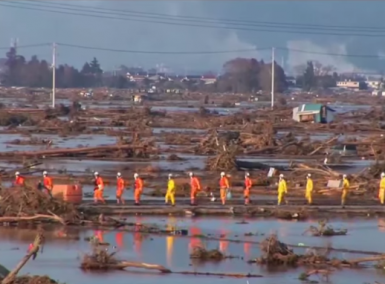
Fukushima – Playing With Nuclear Fire is a documentary about the nuclear situation in Japan.
In 2011, the Tōhoku earthquake struck Japan, triggering a devastating tsunami that claimed about 16,000 lives. The Fukushima Daiichi Nuclear Power Plant was hit during the storm, and three reactors suffered explosions. Despite global concern over the amount of radioactive material released, the Japanese government downplayed the severity of the situation. I remember being in South Korea at the time, and there were conflicting messages about acid rain, a collateral effect of the nuclear situation in Japan. Some employers canceled work, while others did not, and no one seemed to know whether or not it was safe to be outside.Three years later, there are still serious concerns over the ongoing levels of contamination, but a lack of government transparency makes it hard to know what is really going on. In Playing With Nuclear Fire, VICE News heads to Fukushima to find answers.
After interviews with Japanese residents, government officials, doctors, and scientists, the documentary leaves you with even more questions. In an elementary school 4.1 miles from the Fukushima Daiichi Nuclear Power Plant, a doctor tests children and finds signs of radiation poisoning, saying that people should not be living there. This is especially troubling considering that high abnormality and mortality rates due to contamination pass on from one generation to the next.
There is also a problem of what to do with the nuclear waste. When groundwater passes through the site and is exposed to radiation, it must be removed and placed into storage tanks. The Fukushima Daiichi Nuclear Power Plant is currently surrounded by 1,000 of these tanks, holding 90 million gallons of radioactive water. As if this wasn’t enough, the tanks are leaking and it is unclear how much contaminated water is washing into the Pacific Ocean. ATEPCO employee, who agreed to talk under anonymity, confirmed that the water leakage is worse than portrayed, and also that the reactor’s cooling system is in the process of breaking down. Until the government addresses the reality of the situation, nothing can be done and the problem will continue to get worse.
The video claims that because of the cover-ups, a minor nuclear accident could turn into the greatest nuclear disaster the world has ever seen. Humans are resilient and can find hope in the worst of situations, but in order to do so, they need to know what they are facing. The video ends on an ominous note, signaling the price of continued government secrecy and denial: ‘If we continue, not only Japan, but also Earth, is in peril.’



